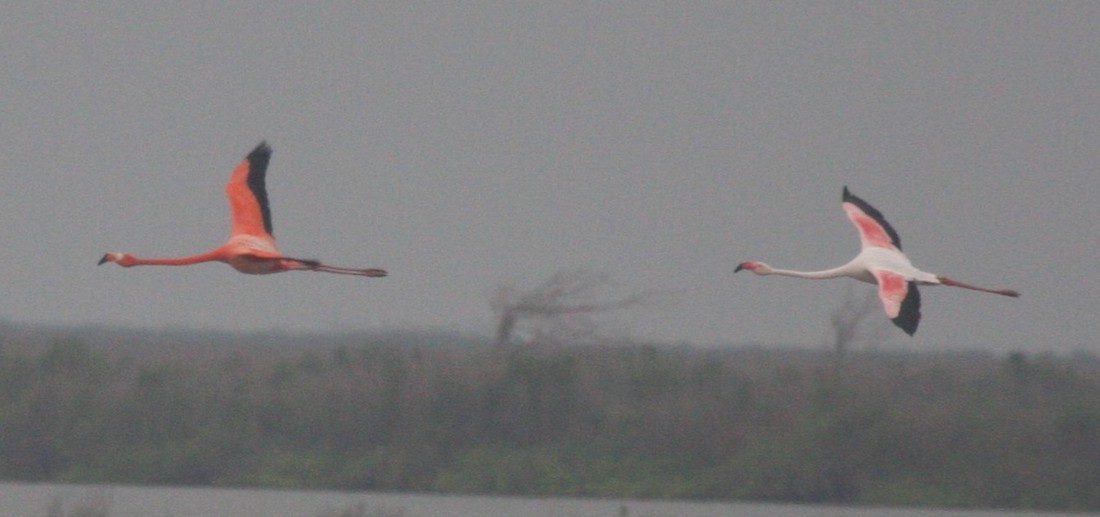A flamingo was spotted in the wild in South Texas by Ben Shepard, an intern with the Texas Parks and Wildlife Department. Quickly ID’d as notorious fugitive Flamingo No. 492 who authorities report has been on the lam for thirteen long years.
In 2005, forty flamingos travelled from Tanzania to the Wichita County Zoo in Kansas. It’s common practice for zookeepers to clip a part of a newborn flamingos wing, rendering them flightless; the procedure is painless, done before the baby birds wings have developed. The flamingos that arrived from Tanzania, however, were already fully grown, zookeepers made the ethical choice of clipping their feathers instead.

Fast forward to the following year. Zookeepers have probably forgotten about their ethical decisions last year, and some of the flamingos have grown new flight-worthy feathers. Flamingo No. 492 and Flamingo No. 347 are seen with their beaks together during a particularly windy day. While zookeepers are distracted, the two caged birds make a break for it – soaring out of their enclosure. Zoo patrons report the escape and retrieval missions are put into action – but the flamingos prove to be particularly good at evading their captors.

By now, Flamingo No. 492 and Flamingo No. 347 are having a helluva time outside of the zoo. They’re hanging out in a drainage canal in west Wichita, laughing at the park officials feeble arrest attempts.
A plan was hatched. The park officials would wait until the cover of night, using a spotlight to disorient the flamingos. But, disaster struck for the Wichita Zoo when a thunderstorm hit. The thunderstorm disoriented the flamingos, No. 347 went north to Michigan – never to be seen again.
No. 492 on the other hand, found a lovely climate in Southern Texas, which is over 1000 km away. Funnily enough, the birds were officially too far gone for the Wichita Zoo to pursue them on July 4th, America’s Independence Day.

Sadly, No. 492 was left without his BFF No. 347. Flamingos are social creatures, they live and travel in flocks. Even when they’re in need of medical attention at the zoo vets will keep a few of them together so they stay calm.
In some insane stroke of luck, No. 492 found another flamingo in Southern Texas. It’s Southern Texas – the likelihood of finding one flamingo in the wild is slim-to-none. Finding two is completely unheard of, and the two finding each other is nothing short of fate.

Even though No. 492 is an African flamingo and his new buddy is apparently from the Caribbean, they get along like brothers. Or boyfriends. No one actually knows the birds’ gender or intimate relationship details – that’s just none of our business, really. What we do know is that they were seen together as early as 2006 and as recently as 2013.
For more animal fugitives, check out expert escape artist, Pepper the Cat.


